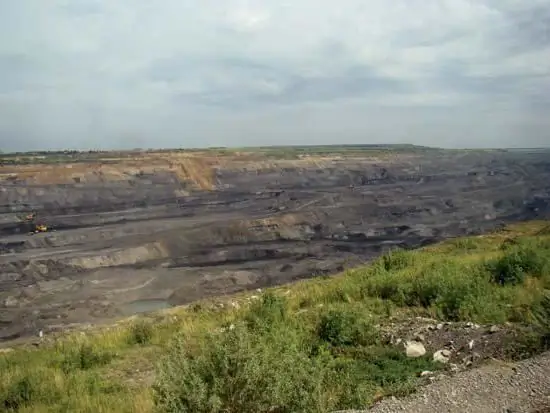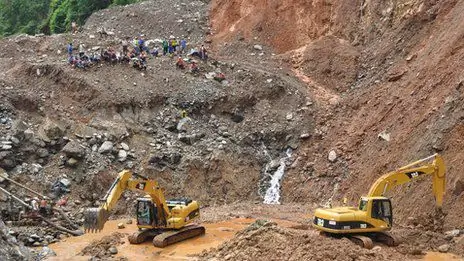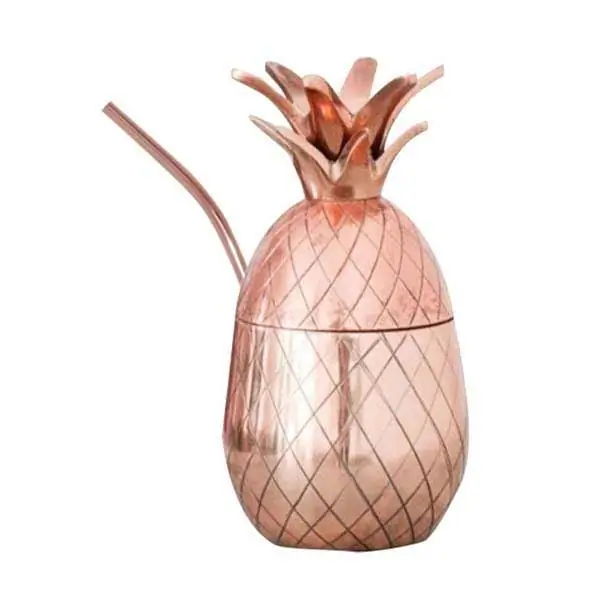2025 Author: Howard Calhoun | [email protected]. Last modified: 2025-01-24 13:10:37
Gold mining in Russia is an important industry that has been neglected for a long time. The mines that developed in tsarist times were destroyed during the revolution and the Civil War. The Soviet period also did not bring prosperity to the industry. Perhaps new economic conditions will streamline the mining system.
Legend of the find
The history of gold mining in Russia, according to the official version, began in the 18th century. It is believed that the start was a small stone, which was found by a schismatic in the area of present-day Yekaterinburg. For some reason, he reported the discovery to the administration of the Yekaterinburg plant. He continued his search and found many such stones. Later, the Primary gold mine was founded on the site of the finds.
The fact that gold mining in Russia can become a large-scale industry has been mentioned since the fifth century. This was told by many historians who visited the regions of the Ural mountain system and observed a large number of jewelry and household items made of precious metal among indigenous peoples.
The backbone of the state scale industryfounded by Peter the Great in 1719. At the beginning of the 19th century, Russia became a leader in the development and extraction of gold. After the reform carried out by S. Yu. Witte and the introduction of the "gold standard", gold coins began to be minted in Russia, and the mines became available for development by foreign companies and private traders.

After the revolution
After the 1917 revolution, gold mining in Russia was left to chance for many years. The state did not pay any attention to the industry for a long time, relying not on the development of known deposits and the exploration of new ones, but on the expropriation of gold and its products from the population. The Precious Metals Committee was established in 1918, but it took some time to put things in order and register the mines.
The main places of gold mining in Russia were in the Urals, in Siberia, where the new government did not immediately reach. Working mines and mines passed either to the “whites” or to the “reds”. Opponents destroyed equipment, flooded the mines and dispersed the miners' artels. During the Civil War, the industry was practically destroyed. Back in the First World War, gold mining in Russia declined. For example, in 1918 the country received only about 30 tons of metal, and in 1913 the amount reached almost 64 tons per year. In subsequent years, production has steadily declined. In 1920, 2.8 tons were mined, and in 1921, only 2.5 tons of precious metal were obtained from miners.

Declining fishing performance
In the period from 1918 to 1922, in the gold mines, the Sovietthe authorities received about 15 tons of gold, during the same period 15.7 tons of gold and products were seized from the population. According to unofficial data, the amount of "voluntarily given away" was much larger, according to experts, through the B altic countries, during the same period, about 500 tons of metal were exported. In 1921, the state carried out a monetary reform based on the “gold standard” formula, i.e. cash was to be backed by gold reserves again.
By 1922, it became clear that all known deposits were already depleted, the data of many geological explorations were lost, and new expeditions were not carried out. The statement of fact took place in 1924. In the light of the implementation of steps to restore state control over mining, Glavzoloto was endowed with exclusive powers, opportunities, and credit funds. In 1925, a plan was prepared, the main emphasis in mining was on encouraging working artels, the priority development of state organizations over private ones was determined.
Pre-war period
In 1927, Glavzoloto was reorganized into Soyuzzoloto, organizational measures were taken to create a geological exploration service and train new personnel. The first measure to stimulate mining was the development of a system of financing and encouraging private artisanal mining and small gold mining enterprises. In 1923, gold mining began in the Aldan River basin (Yakutia). It is said that gold could be collected by hand. The main gold mining in the region was carried out by the Aldanzoloto trust.

In two years (1927-1928) the extraction of the precious metal increased by 61%. In 1929, more than 25 tons of pure gold were mined in the country, most of which was brought by state organizations. The next significant increase in the volume of gold received occurred in 1936 and 1937 and amounted to 130 tons, Russia ranked second in gold mining in the world ranking.
By the beginning of the war, the industry supplied the state treasury with about 174 tons of precious metal per year. Most of the reserves went to the purchase of equipment for industry, ensuring the industrialization and independence of the USSR.
War period and post-war years
Gold mining in Russia has always been an industry with classified data. During the war years, the level of secrecy was increased, what were the indicators of the industry during this period, it is not reported in open sources. It is known that the level of gold sales exceeded the rate of production. The state stimulated all artels (primarily private ones). Workers were provided with food and were rewarded. Despite the gravity of the situation, capital construction was carried out, production capacities were updated. For Lend-Lease supplies, the Soviet Union paid about 1.5 thousand tons of gold.
In the post-war period, it was necessary to urgently restore the economy, rebuild cities and give the people the opportunity to settle down after a devastating tragedy. The history of gold mining in Russia of this period is painted in gloomy colors - the industry was placed under the supervision of Glavspectsvetmet, which belongs to the Ministry of Internal Affairs.
In a short time were organizedcamps where prisoners served their sentences mining gold. There were about 30 ITLs operating in the system, specializing in the development of precious metal deposits. This move made gold production a record high at minimal financial cost, all paid for by thousands of prisoner lives. By 1950, 100 tons of metal had been mined in the country. The gold reserve in 1953 was a record in the USSR and amounted to 2049 tons. This indicator has not been exceeded so far.
The period of Khrushchev's reign was characterized by many surprises. For the world community, the main one was the active and significant sale of gold on world markets. The West viewed the massive injection of gold into the market as Russia's peaceful aggression. The main part was spent on the purchase of food. The largest intervention of Russian gold occurred in 1963, when 800 tons of metal were spent on the purchase of grain.

Our days
During the reign of L. I. Brezhnev, gold mining in Russia was not going through the best period, the industry did not receive due attention. A large amount of precious metal reserves went to foreign markets for the purchase of food, while the level of production was steadily falling. In 1988, the approach to supplying the industry was revised, a reorganization took place, and the level of production began to grow. In 1990, it reached a solid level of 300 tons.
The perestroika period was chaotic for the entire economy, including the gold mining industry. Sales of metal in foreign markets grew with a sharp drop in output. The most critical year was 1998,production amounted to only 115 tons. With the intervention of the state in fishing, the situation began to level off, but a unified system has not yet been developed. Gold is an important financial component of GDP, but there is no single policy yet. At the beginning of the 21st century, there were almost 6 thousand deposits in Russia.
The largest gold deposits in Russia
In the modern world ranking of gold reserves in the bowels, the Russian Federation occupies the fourth position. The largest gold mining sites in Russia are concentrated in Siberia and the Far East. Intensive development and extraction of the precious metal has been established at several mines, from where the gold reserves are replenished.
Mining areas:
- Khabarovsk Territory.
- Amur Region.
- Magadan region.
- Krasnoyarsk Territory.
- Republic of Sakha.
- Chukotka Autonomous District.
- Sverdlovsk region.
- Buryatia and others
A significant mass fraction of gold comes from large mines:
- Solovevsky.
- Dambuki.
- Ksenievsky.
- Altai.
- Nevyanovsky.
- Gradsky.
- Conder.
- Udereysky.

Private gold mining in Russia
Gold mining in Russia by private individuals has been banned since 1954. Stalin's times were fertile for miners. By government decree, additional benefits, bonuses were introduced for them, and the right to use the best gold fields was granted. For stimulationwork distributed apartments, vouchers to holiday homes, etc. In the pre-war period, any adult who did not have a criminal record could obtain a permit for gold mining.
The number of miners who worked alone or in private artels reached 120 thousand people. The mined metal was accepted by numerous specialized points. Through the work of private traders, many new mines were opened and equipped, later they came under the control of state structures. During the period of operation of private enterprises (1932-1941), the amount of gold mined increased five times.

Russian gold
According to the global results of 2016, Russia ranks third in the production of gold from minerals and came in second in the total production of the precious metal. According to S. Kashuba (Chairman of the Union of Gold Producers of Russia), it was expected that the level of production for 2016 would be about 297 tons, a slight increase in production is planned for 2017.
Successful projects in 2016 were the development of the Pavlik field in the Magadan Region and the Ametistovoye field in Kamchatka. Exact information about the results of 2016 has not yet been made public. What is the total investment in Russian gold mining is unknown.
According to official data, in 2015, Russia's gold mining per year amounted to 294.3 tons of metal, which improved the figures of the previous period by 2%. In 2016, Dmitry Medvedev signed amendments to the law "On Subsoil" that allow private individuals to engage in gold mining.

Amendments to the law: for and against
From 2017, private gold mining in Russia is allowed. The law provides for the lease for five years of 15 hectares of land, where, according to experts, contains up to 10 kilograms of gold. There are a number of restrictions during development:
- Gold can only be mined by surface methods.
- No blasting.
- Digging depth is 5 meters.
The Magadan region was chosen as a test site for the pilot launch of the project, where they counted 200 sites ready for private development. The government considers this step as a social project. The population of the northern regions is in distress. Most are unable to find decent work, and gold panning has long been a traditional way of earning a living. Illegal business is flourishing even now, after the adoption of the amendment, many will have the opportunity to work in the legal field, and the state will receive additional income.
There are fears that crime and theft will begin rampant, which took place in the Magadan region in the 90s, when a local law on private gold mining was adopted. The FSB and the Ministry of Justice opposed the adoption of the amendment. Many are of the opinion that private practice will not solve the problem of unemployment. Proposals are being made to open several of the hundreds of frozen deposits, which will make it possible to employ thousands of people and receive an influx of people into the Magadan region.
Recommended:
Moscow region coal basin - history, features and interesting facts

Mining is an industry that has been developing for a very, very long time. One of the rather old deposits is the Podmoskovny coal basin
The banking system of Russia: history, features and interesting facts

The process of development of savings banks has become a turning point in the formation of the banking system of Russia. From them, a large financial organization, which we all know as Sberbank, traces its history. Its first cash desks were organized in two of the most significant cities of the state - Moscow and St. Petersburg. A significant event took place in 1842
Gold mining. Gold mining methods. Mining gold by hand

Gold mining began in ancient times. In the entire history of mankind, approximately 168.9 thousand tons of precious metal have been mined, almost 50% of which goes to a variety of jewelry. If all the mined gold is collected in one place, then a cube would be formed as high as a 5-storey building, having an edge - 20 meters
Copper ore: mining, refining, deposits and interesting facts

Copper is quite widely used in almost any of the existing industries, it stands out from a variety of ores because it is the most in demand. copper ore is a natural resource derived from an ore called bornite that is often used in industry. Great demand for this ore appeared not only due to the large amount of copper in the composition, but also due to the good reserves of bornite in the ground
Gorky Automobile Plant (GAZ): the history of the plant and cars, features and interesting facts

Among Russian cities there are many whose history is inextricably linked with the functioning of large automobile enterprises. These are, for example, Naberezhnye Chelny and Tolyatti. Nizhny Novgorod is also on this list. The Gorky Automobile Plant (GAZ) is located here

